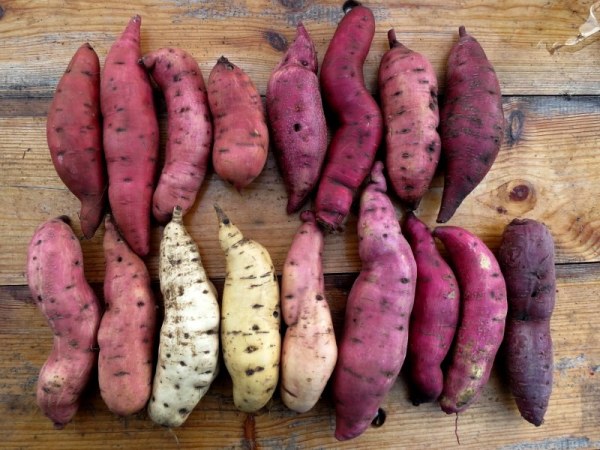
Sweet potato, aka Kumar, aka sweet potato, is a tuberous plant of the bindweed family. Although in our country this culture is known as “sweet potato”, it has absolutely nothing to do with potatoes.
The homeland of sweet potato is considered to be Peru and Colombia, and this agricultural crop is known for more than ten thousand years. Sweet potato fell into the Old World thanks to Columbus and firmly settled in Europe.
Sweet potato varieties are usually divided into three main varieties:
- feed;
- vegetable;
- dessert.
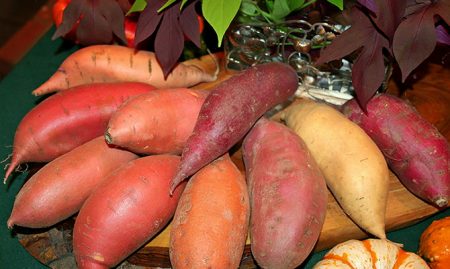
Sweet potato desserts are distinguished by their sweet taste, similar to pumpkin, carrots and sugar beets. Vegetable varieties have a fresher taste and are used to make salads and main dishes. In Russia, sweet potato began to be popular not so long ago, but has already aroused keen interest among farmers and lovers of exotic products. Another difference between sweet potato and potatoes is that it can be eaten both after heat treatment and completely raw. Unlike ordinary potatoes, sweet potato roots are large. Some outstanding specimens can reach up to 30 centimeters in length and weigh up to 3 kilograms. Even sweet potato leaves can be eaten, but only if the plant has not yet begun to turn yellow and fade.
Content
- 1 Chemical composition
- 2 Advantages and disadvantages of sweet potato
- 3 Features of growing seedlings
- 4 Sweet potato - growing in the middle lane
- 5 Yam collection and storage
- 6 Growing sweet potatoes in the Krasnodar Territory
- 7 Sweet potato cultivation in Belarus
- 8 Varieties of sweet potato
- 9 Sweet potato reviews
Chemical composition
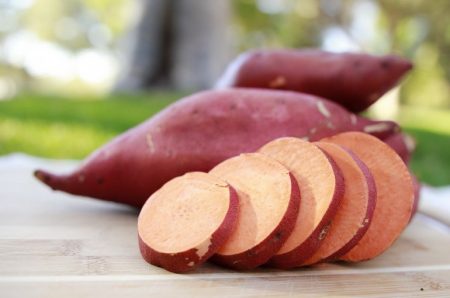
By its chemical composition, sweet potato is simply a storehouse of trace elements and vitamins. It contains magnesium, potassium, calcium, phosphorus, iron, folic and pantothenic acids, as well as a large amount of vitamins (A, C, PP, B1, B6).
It is believed that one serving of sweet potato can make up the daily intake of vitamin A. Regardless of the fact that sweet potato is considered to be a sweet vegetable, it has a very low glycemic index and can perfectly supplement the diet of people with diabetes.
Advantages and disadvantages of sweet potato
It is possible to enumerate all the advantages of sweet potato for a very long time, but try to focus on the most important of them:
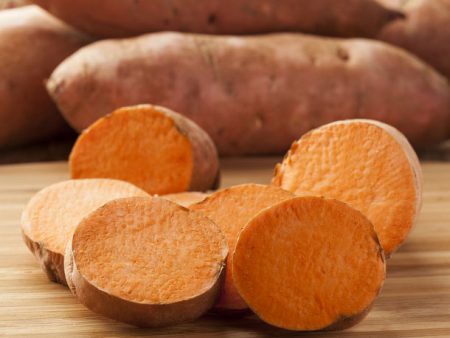
- Gastrointestinal tract. The product envelops the gastric mucosa and helps to significantly improve perilstatic of the body.
- Problems with the cardiovascular system. Due to the content of B vitamins in the vegetable, it improves the functioning of blood vessels, strengthens their walls and helps to cope well with cholesterol plaques.
- The brain and nervous system. Potato is found in large quantities in sweet potato, which helps to improve connections in the nerve endings, and helps to maintain the brain in an active mode.
- Excess weight. Sweet potato is saturated with fiber, which gives the body a feeling of fullness, and a slimming person needs a small portion to calm the feeling of hunger. Moreover, sweet potato has a very low calorie content and can be eaten without worrying that it will be deposited on its sides.
After such a large list of useful properties, it seems that sweet potato has no drawbacks and people of any age groups can eat it, regardless of health problems. But, unfortunately, this is not so at all. Sweet potato has some disadvantages that you should know about before you start eating it.
Sweet potato is categorically contraindicated for people with stomach ulcers. It is also not recommended to eat a vegetable for women during pregnancy and during lactation, in order to avoid health problems.
A vegetable contains a small amount of oxalates, which in certain cases can crystallize into kidney stones.
Features of growing seedlings
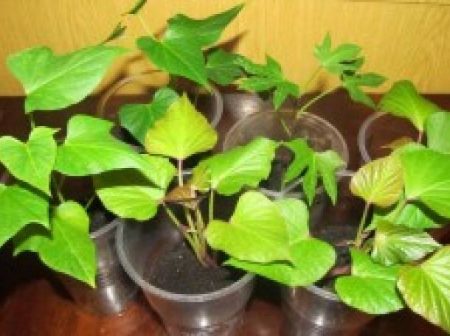
Although sweet potato is also a guest in our country, this does not mean at all that overseas vegetables cannot grow in our latitudes. Sweet potatoes are a lover of humid and warm climates. The vegetation period takes about 180 days, for a temperate climate of central Russia this is too long.
Therefore, our farmers prefer to plant it ahead of time (in about 60-120 days), and then transfer it to open ground in the warm season. You can grow seedlings with the help of seeds and root crops of the plant. The first option in our country is almost never used, since it is very difficult to get sweet potato seeds, and wait until viable seedlings grow from these seeds for a very long time. Therefore, the option remains with the tubers.
Sweet potato - growing in the middle lane
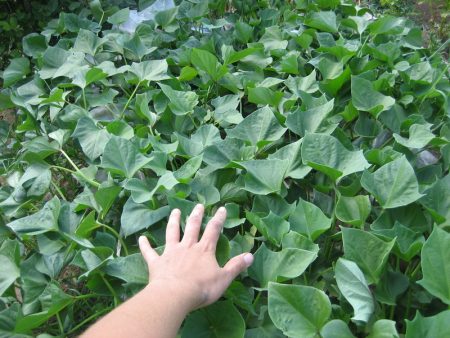
As mentioned earlier, in central Russia, the most acceptable method of growing seedlings is the tuber method.
There are three ways to grow sweet potato seedlings from tubers:
- horizontal way;
- vertical way;
- growing in water.
In order to get good seedlings you will need to buy good young sweet potato tubers. You can purchase them at a store or from the sweet potato growers. The better the vegetables you buy, the more likely they are to get viable and strong seedlings.
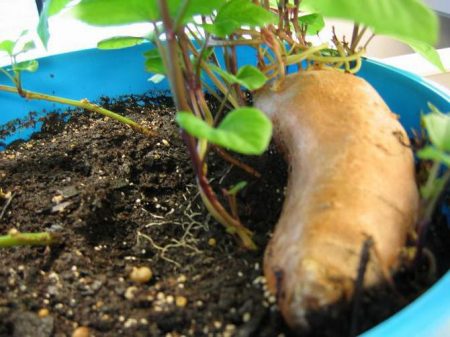
The horizontal method implies that a root crop is placed in a box with soil on its side and pressed slightly into the ground. Then it is abundantly watered with water. It should be noted that holes should be made in the box for moisture to escape. The land itself for germinating seedlings must undergo preliminary processing and be well fed with mineral fertilizers.
The sweet potato itself is recommended to be placed in a fungicide solution for several minutes before planting. It is believed that in this way you can get rid of various plant diseases, as well as accelerate its growth.
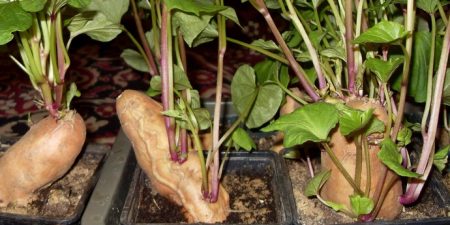
With the vertical method of planting, the tuber is placed in the ground at an angle of 90 degrees to the surface. Depending on which variety you are going to cultivate, you can apply a wet or dry method of germination.
The box with seedlings must be removed in a dark and warm place. After the shoots appear, the box for several hours a day needs to be taken out to a bright place, so that the plants gradually get used to the sunlight.
Growing in water. In order to germinate the sweet potato in water, a strong root crop should be selected without visible rotting sites and dents. Otherwise, sweet potato may deteriorate from constant contact with water.

Half of the vegetable is placed in a glass of water and hardened on the sides with toothpicks so that one half is in the water and the other sticks out above the water. After a couple of weeks, you will notice that sprouts started to diverge in all directions from the tuber. You just have to carefully separate them from the sweet potato itself and transplant into prepared soil.
Now that the seedlings have reached the required size for planting in open ground, you need to make sure that the soil is ready to grow a plentiful crop. Soil should be fed with mineral fertilizers. Sweet potato itself may not be so whimsical to the composition of the soil, but still prefers to take root in the place where there is a sufficient amount of potassium and sulfur.
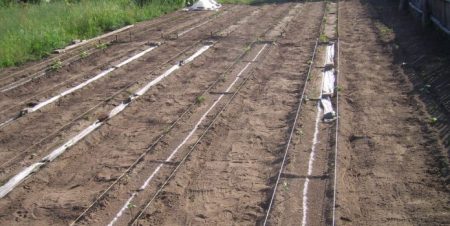
The root crop in its homeland is considered a perennial plant, due to the warm and humid climate it does not require special care. But in our latitudes it will be necessary to create more comfortable conditions for sweet potato than for other vegetables, if you want to get a good harvest.
Plant sweet potatoes in the soil only after the mark on the thermometer exceeds 20 degrees.And it is necessary to harvest before the time when the temperature drops below 4 degrees, otherwise the sweet potato will simply freeze.
In addition to the soil rich in mineral elements, root crops need abundant watering for fast growth. You should irrigate the area for planting sweet potatoes every day, otherwise the root crops will not be saturated with moisture and will not acquire the juiciness for which gourmets are so appreciated.
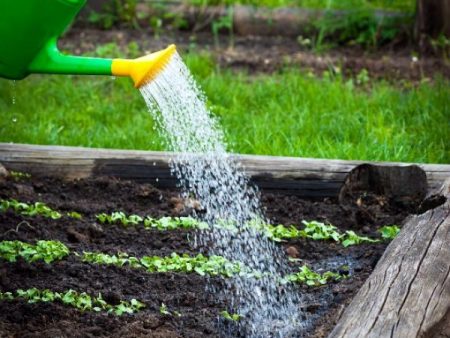
Stop watering the plant is about two weeks before harvest. Otherwise, the sweet potato may turn out to be overly watery and tasteless from the inside.
Usually, sweet potato seedlings are planted very tightly to each other, but since the plant belongs to the bindweed family, it is worth leaving a distance of at least fifty centimeters between the beds.
Do not plant other vegetables close to the sweet potato, as the stalks of sweet potatoes very quickly envelop the plants adjacent to it and deprive them of solar heat and light.
Loosening the soil for planting should be very shallow, about twenty centimeters. But no deeper, because otherwise the sweet potato will not have time to take root and produce fruit. Make holes and insert one cuttings in each of them so that ¼ plants are above the ground. Try not to damage the root system of the plant and plant as quickly and accurately as possible.
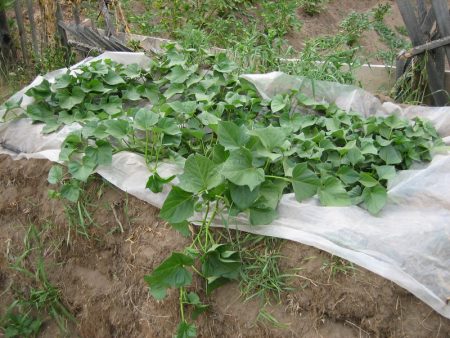
In temperate climatic zones, sweet potatoes are most often planted under a film, creating conditions for it like a greenhouse. On warm days, the film is removed, and the rest of the time it protects still fragile landings from possible weather deterioration.
After all the plants have taken their places, water the soil abundantly, but do not place swamps on the beds: sweet potato loves moisture, but not excessive moisture.
There is no need to worry about weeds in the case of sweet potato; its foliage and stems form a very dense cover, which deprives other plants of comfortable conditions for further development.
If in the situation with weeds your heart can be calm, then with pests you should be constantly on the alert. Thanks to its sweet root vegetable, sweet potato is a tasty morsel for mice, moles, gherkins, slugs and spider mites. Once eating this delicious vegetable, the parasites will not leave him alone of his own free will.
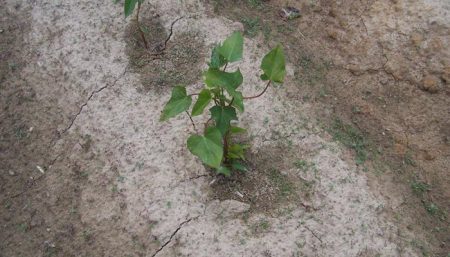
You will have to start a serious pest control in order to keep your crop safe and sound. Fortunately, now in specialized stores you can find many effective tools to combat crop destroyers. The main thing is to try to process the plant as carefully as possible so as not to give a chance to pests.
If there are no problems with parasites, this does not mean that you can relax and do nothing for several months. Even if you have carefully treated all tubers with a fungicide solution, there is always a risk that the plant will become sick and begin to wither.
It depends on the condition of the soil, for example, if it is too acidic or insufficiently fertilized or moist. Sweet potatoes can also hurt from the lack of access to fresh air and sunlight (if suddenly the plants are placed in greenhouses).
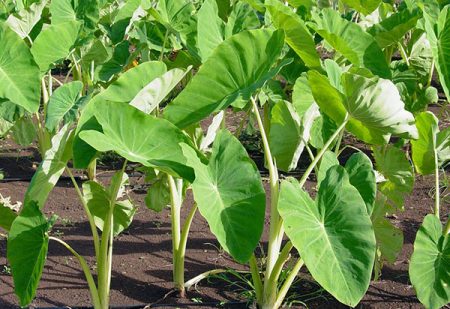
In order to prevent the disease of sweet potato and the death of the entire crop, from time to time inspect the sprouts with all care. The most common and unpleasant disease of sweet potato is the black leg (fungal disease of plants). It is very difficult to get rid of it and it is better to take good care of the plant initially than to allow the spread of such an infection.
Sweet potato is a sun-loving plant, and no wonder, because in its homeland the sun shines all year round. Before planting sweet potatoes, carefully inspect your area and select a place where no shadow falls. It should be fully lit and warmed up by the sun. It is known that amateur farmers install powerful lamps in greenhouses so that plants do not lack bright or warm light day or night.
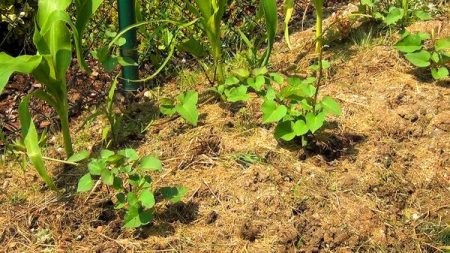
It is necessary to feed yam for the entire growing season several times. It is better that these are proven potassium-rich mineral fertilizers. If you have the opportunity to fertilize the earth with wood ash infused for several weeks, the plant will thank you at the end of the season with a plentiful harvest.
Make it a rule to lift all the stems of sweet potato from the ground every few weeks and carefully inspect them. Your task is to prevent the stems from letting out extra shoots that begin to take root in the ground. In the case when there are more such sprouts, the plant ceases to spend its energy on the growth and development of root crops, and allows it to grow roots.
Yam collection and storage
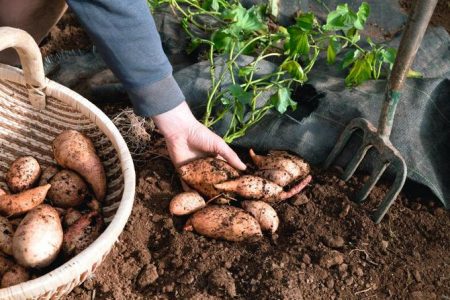
It is necessary to collect sweet potato, as we already said above, until the moment when the air temperature drops to four degrees. You will notice that the leaves of the plant turn yellow and lose their elasticity. This is a signal that the crop is ready for harvest.
Before harvesting, remove all creeping stalks of sweet potato and inspect the ground. It should have characteristic cracks that will tell you where to look for root crops.
Take the forks and carefully lift the ground. Do not use a shovel, as root vegetables are quite fragile and it is very easy to break them. Sweet potato, unlike potatoes, grows very closely, and there is no point in looking for it in different corners of the hole. Vegetables are dug up by a single bunch. Do not try to pull the yam from the ground like a potato bush, root crops will remain in the ground, and what’s worse, they will break apart.
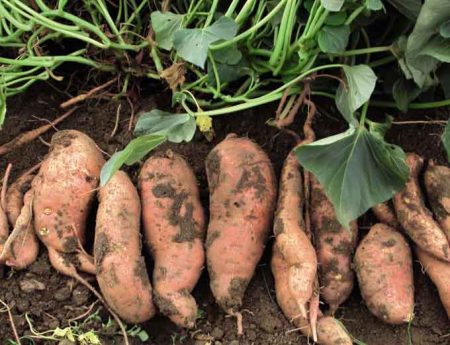
After the entire crop has been harvested, immediately select the appropriate root crops in order to use them for seedlings by next year. Gardeners recommend washing the yam with a weak solution of potassium permanganate to clean it.
Put the remaining tubers in wooden boxes, laying them with paper or sprinkling them with sand. Sweet potato does not need special storage conditions. He will feel great at room temperature for several months after the harvest.
Growing sweet potatoes in the Krasnodar Territory
Since the Krasnodar Territory is located in the very south of Russia, the weather there is better suited for growing heat-loving sweet potato. There are more warm and sunny days per season in this region and it is much easier to create favorable conditions for sweet potatoes.
The main thing is not to let pests spoil the root system and protect the leaves from drought. Regular watering will allow you to get a rich harvest in the fall.
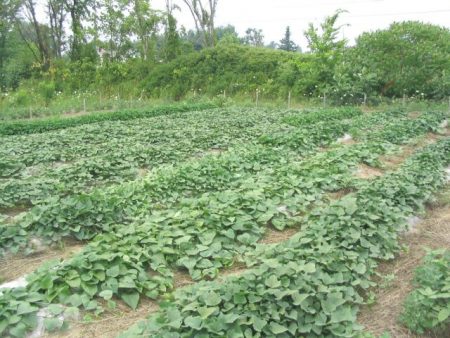
Owners of household plots recommend planting sprouts in open ground only after acacia blooms. Then the likelihood that no cold nights are foreseen and that the harvest will not have to worry much is much higher.
Farmers enthusiasts began to grow sweet potatoes in the Krasnodar Territory relatively recently. At first, people were confused not only by the appearance of the vegetable, but also by the incomprehensible Russian man pronounced sweet taste. If they say potatoes at us, they expect to get a product familiar from childhood, and instead, on the table is food that combines the tastes of various vegetables.
But every year, there are more and more lovers of sweet potatoes, farmers exchange different varieties, send seedlings to each other, and even try to independently develop new species that will be even better adapted to Russian weather conditions.
Sweet potato cultivation in Belarus
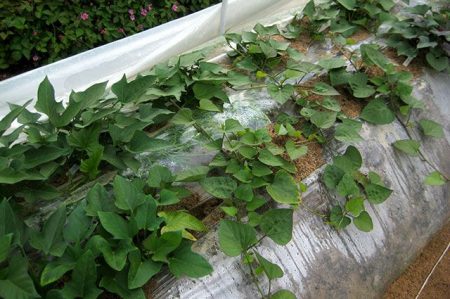
Belarus is rightfully considered the main potato producer in the CIS countries. The climate here is ideal for growing this beloved root crop.
If ordinary potato grows so well in our country, then why not the farmers decided to try to grow its sweet counterpart and did not postpone the matter.
Since it was necessary to grow ordinary potatoes and sweet potatoes in different conditions, I had to tinker with it until the overseas vegetable began to give a good harvest.
Several enthusiastic gardeners boldly got down to business: they received seedlings in different ways, groomed and cherished sprouts in large boxes on their balconies. They were treated with fertilizers and protected from sunlight.
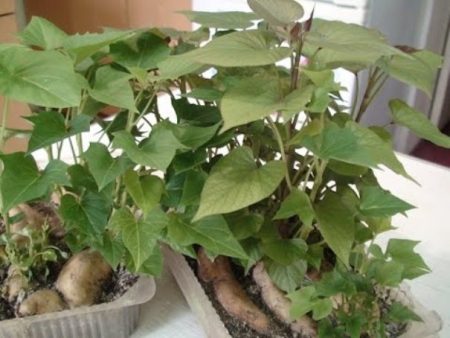
Of course, in Belarus there will never be a question about the mass planting of sweet potatoes and he will never remove potatoes from the pedestal, but many are ready to diversify their diet with useful and unusual vegetables.
If more was said about sweet potato and it would not be considered a vegetable that prefers a purely warm and humid climate, you see, and more people would be involved in sweet potato production, one of the first gardeners who planted sweet potatoes in his garden believes.
Varieties of sweet potato
Since the sweet potato itself is divided into three types, each species has its own varieties, which are very popular among farmers:
- Japanese
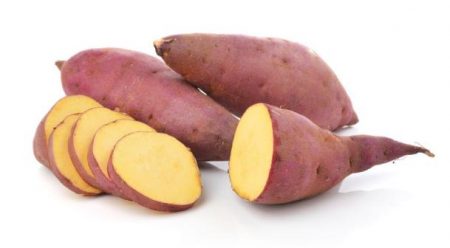
- Purple
- White
- Bonita
- Taynung
- Manchurian
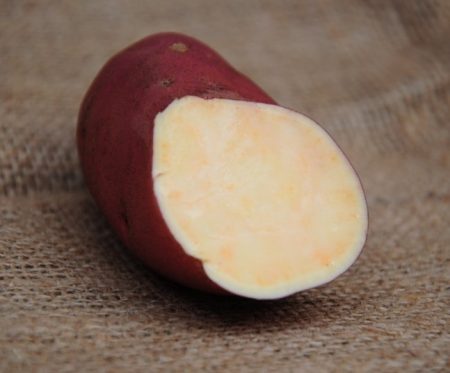
- White
- Ginseng red
- Beauregard
- Vinnitsa pink
- Garnet
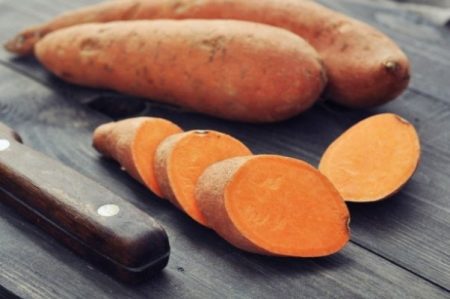
- Betty
- Vardaman
And there are many other varieties that you can choose depending on which taste you like best with sweet potato.
Sweet potato reviews
All people who at least once try sweet potato agree that its taste cannot be forgotten. This is such a unique vegetable that there is no point in comparing it to taste with potatoes, banana, pumpkin or carrots.
This is a unique root crop that can be used in the preparation of salads, desserts, eat as an independent dish.
Sweet potato mixes wonderfully with different types of vegetables and helps to emphasize their taste. It does not need additional seasonings, as it has its own bright notes.
Gardeners say that the taste of sweet potato always depends on the quality of the fertilizing used during its growth, as well as the degree of moisture of the earth and its acidity.
Those who have been growing sweet potatoes on their land for a long time admit that they would be ready to abandon ordinary potatoes in favor of a new overseas guest.
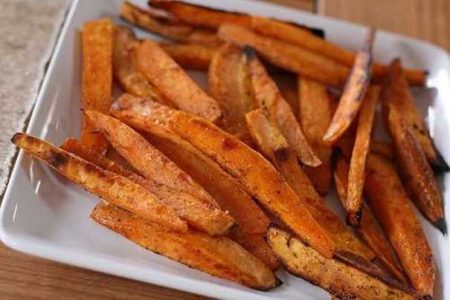
The easiest way to cook sweet potato is to bake it in the oven, after first wrapping it in foil. With this recipe, the flesh will remain juicy, soft and sweet. There are many recipes on the Internet with the most unusual ways of making sweet potatoes. Some housewives manage to make even cakes and pies from this vegetable.
You can use sweet potato as a side dish with different types of meat and vegetables, you can pour it with sauces, make light vegetable salads with it, fry like potatoes and even use it in desserts. How far experiments with a vegetable will go, only your imagination can decide.
